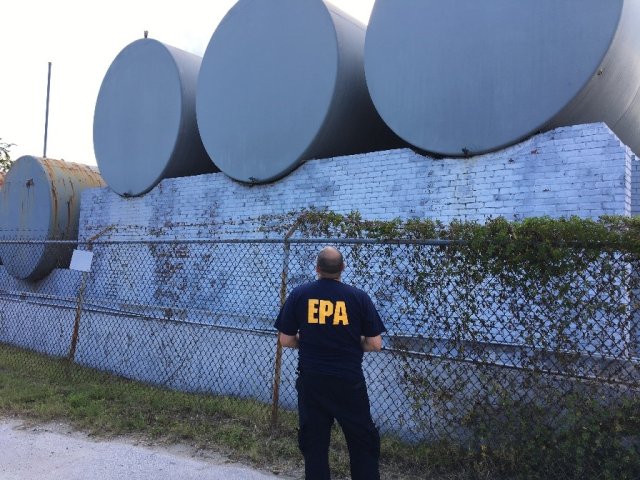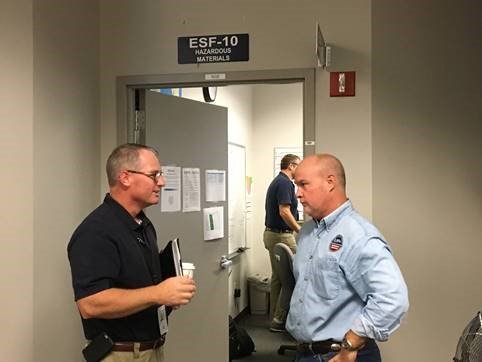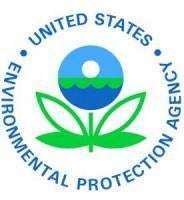WASHINGTON (September 15, 2017) – U.S. Environmental Protection Agency (EPA) continues to coordinate closely with local, state, and federal partners in response to Hurricane Irma.
Response teams remain on the ground in Florida, Georgia, South Carolina, Puerto Rico, and the U.S. Virgin Islands.

As of September 15, 2017, the following information is available:
REGIONAL OPERATIONS CENTERS
Region 2:
- About 106 personnel are currently involved in response efforts. Assessment teams have been deployed to Puerto Rico and the U.S. Virgin Islands and are conducting on-the-ground operations.
- EPA has two teams in Puerto Rico and four teams in the U.S Virgin Islands to conduct water and debris assessments and hazard evaluations.
Region 4:
- The Region has approximately 79 personnel involved in emergency response efforts in the field in Florida, Georgia, and South Carolina, including at the Regional Emergency Operations Center (REOC) and the FEMA Regional Response Coordination Center (RRCC) in Atlanta, and the Florida State Emergency Operations Center (SEOC) in Tallahassee.
Florida:

- Facility assessment teams began assessment at 215 targeted facilities, within 23 counties, identified by the Florida SEOC ESF-10 (Oil and Hazardous Materials Response) Desk as of September 15, 2017. 160 facilities were assessed with one issue reported for a drum storage area not related to Hurricane Irma. The list is composed of a combination of Facility Response Plan (FRP) and Risk Management Plan (RMP) facilities.
- The Region 4 Air, Pesticides, and Toxics Management Division (APTMD) contacted a total of 217 RMP facilities in Florida. One of those facilities, Pilgrim’s Pride in Live Oak, indicated that they had a release of ammonia on September 12, 2017, that is now stopped. This location has now been prioritized for a field assessment and a team has been assigned. A second facility, Lehigh Acres in Lehigh, reported a 200-gallon release of a chlorine-water mixture that was dispersed from storm water. The facility has been assigned to the assessment task force for follow-up. All other facilities contacted indicated that they had no known releases.
- The Region 4 Water Protection Division (WPD) continues to coordinate with FDEP and the U.S. Army Corps of Engineers (USACE) on water and drinking water issues. The Water Team arrived in Tallahassee and is working with USACE at the Florida SEOC to support preliminary water and wastewater system assessments. Drinking water and wastewater facilities continue to submit their requests for assistance. The WPD compiled an inventory of community drinking water systems (CWS) and Publicly Owned Treatment Works (POTW) that may be used during post-storm damage assessment in Florida.
- The SESD Mobile Laboratory remains prepared to conduct the following analyses for drinking water: total coliform, E. coli, fecal coliform, and enterococcus.
- The Region 4 Superfund Division deployed 6 Rapid Assessment Teams to Florida to conduct rapid assessments of all National Priority List (NPL) sites. As of today, 57 out of 93 NPL sites in Florida have been assessed.
- The Region 4 Resource Conservation and Recovery Act (RCRA) Division identified 6 EPA-lead corrective action sites that were prioritized for assessment by NPL field teams. One Florida site was assessed yesterday with no impacts found.
- EPA is currently working with FDEP, the Florida Department of Transportation (FDOT), and USACE to develop and implement debris management strategies and operations.
Alabama:
- The Alabama Emergency Management Agency (EMA) returned to normal daily operations as of September 14, 2017. EPA received no requests for assistance but EPA is proactively field-assessing all NPL sites within the state and contacting all RMP and FRP facilities to offer any assistance as needed.
- EPA is proactively assessing all NPL sites within the state and contacting all Risk Management Program (RMP) and Facility Response Plan (FRP) facilities to offer assistance as needed.
- NPL site assessment teams are deploying to Alabama today.
Georgia:
- The Georgia SEOC is currently operating at Level 1 (full activation and fully staffed) activation. Georgia Environmental Protection Division (EPD) notified Region 4 that the 275 RMP facilities in Georgia have not been impacted. EPA is maintaining communication with the state to determine if EPA assistance is needed.
- Yesterday, an EPA-lead RCRA site in Georgia was assessed with no impacts found.
- As of today, 8 of 22 NPL sites in Georgia have been assessed. No issues have been identified and no follow-up is required at this time.
- All 159 counties are now included in the FEMA Order for Emergency Services and Debris Removal.
- Damage assessments, debris removal, and recovery operations are underway throughout the state.
- There have been no requests for federal assistance to assess drinking water or waste water facilities or for temporary power.
North Carolina:
- The state has returned to normal daily operations.
South Carolina:
- The South Carolina SEOC returned to Operating Condition 3 on September 12, 2017, and is maintaining limited 24hr operations.
- Yesterday, an EPA-lead RCRA site in South Carolina was assessed with no impacts found.
- As of today, 26 out of 36 NPL sites in South Carolina have been assessed.
- EPA is proactively assessing all NPL sites within the state and contacting all RPM and FRP facilities to offer assistance as needed.
Mississippi:
- The Mississippi SEOC is currently operating at Level 3 (modified).
Tennessee:
- The Tennessee SEOC remains at elevated activation.
Region 4 Federally Recognized Tribes:
- Region 4 continues to coordinate with the Bureau of Indian Affairs to offer assistance a needed to tribes in the impacted areas.
RISK MANAGEMENT PLANS (RMPS)
- EPA is communicating with the Risk Management Program (RMP) and Facility Response Plan (FRP) bulk oil facilities to ensure they are secure and identify any vulnerabilities.
- EPA’s remedial program is currently performing desk-top assessment of all remedial sites in Region 4 coastal states.
- EPA Region 4 has prepared a Site-Specific Data Management Plan for the incident.
ENFORCEMENT ACTIONS AND FUEL WAIVERS
- NPDES Permits – Earlier this week, EPA issued a letter to FDEP to ensure that all facilities impacted by Irma are familiar with the provisions included in their National Pollutant Discharge Elimination System (NPDES) permits that allow for temporary noncompliance during emergency circumstances. This action helps ensure ports and other facilities get back into operation as quickly as possible while minimizing environmental impacts.
- No Action Assurance (NAA) - EPA policy allows the agency to issue NAAs in cases where it is necessary to avoid extreme risks to public health and safety and where no other mechanism can adequately address the matters. The agency has issued the following NAAs related to Hurricane Irma:
- Today, EPA granted an NAA for the import of 255 power generators by the Yamaha Motor Corporation, U.S.A., to be donated for use in communities impacted by Hurricanes Harvey and Irma in Texas and Florida, to assist in recovery efforts.
- On September 13, 2017, EPA announced that it will not pursue enforcement for Clean Air Act violations related to the use of dyed diesel reserves in vehicles and equipment that are being used by Duke Energy to respond to Florida power outages as a result of Irma. Due to conditions related to the storm, Duke is not able to obtain adequate supplies of required ultra low sulfur diesel fuel needed to operate its fleet of response vehicles. This NAA was issued in response to a request from Florida Governor Rick Scott, is in effect immediately, and terminates when all diesel reserves have been used or by the end of the day on September 22, 2017, whichever comes first.
- On September 11, 2017, EPA issued an NAA to assist all Florida power plant facilities to maintain the supply of electricity to customers and facilities. This action will help meet the needs of FDEP and will assist Florida utility generators to maintain the supply of electricity to customers and critical facilities in the state, while facilitating timely restoration of lost electrical service caused by Irma.
- On Sunday, September 10, 2017, Florida requested and EPA issued an NAA for Tampa Electric Company’s Big Bend Station, Polk Power Station, and Bayside Power Station for compliance with air permit conditions to ensure adequate supply of electric power.
- On Friday, September 8, 2017, EPA issued an NAA to allow emergency and backup electric generating units in Monroe County, Florida, the county that encompasses the Florida Keys, to operate without meeting all pollution controls in order to facilitate the supply of needed electricity during and after Irma.
- Today, EPA granted an NAA for the import of 255 power generators by the Yamaha Motor Corporation, U.S.A., to be donated for use in communities impacted by Hurricanes Harvey and Irma in Texas and Florida, to assist in recovery efforts.
- Last week, EPA extended a low-volatility conventional gasoline waiver through September 26, 2017, in 38 states and the District of Columbia.
REGION 2 SUPERFUND SITES, OIL SITES AND OTHER FACILITIES
- EPA assessment teams have completed all assessments of Superfund sites and oil sites in Puerto Rico and in the U.S Virgin Islands, with the exception of two oil sites where EPA was previously doing cleanup work:
- One site in Guayanilla Bay, Puerto Rico, is the site of cleanup of a sub-surface oil plume. While no spills have been reported from this site, EPA will visit this site in coming days.
- The Cruz Bay Oil Tank site on St. John in the U.S. Virgin Islands is the site of a cleanup involving an oil storage tank that still contains some oil sludge. The tank appears to have been damaged during the storm, but overflights of the area have not shown any oil spills from the site. EPA will investigate this site once it is accessible.
- One site in Guayanilla Bay, Puerto Rico, is the site of cleanup of a sub-surface oil plume. While no spills have been reported from this site, EPA will visit this site in coming days.
- EPA’s initial site assessment of Virgin Islands Water & Power Authority facility on St. Thomas found a large secondary containment tank severely compromised. There was no fuel spill.
- EPA Region 2’s regulated facility team is actively gathering information from regulated facilities via facility personnel in both Puerto Rico and the U.S. Virgin Islands.
- EPA has completed initial assessments of 96 facilities in Puerto Rico, including five field assessments. While four of the five facilities had some minor hurricane damage due to fallen trees and power outages, there have been no reported major spills or chemical releases at regulated facilities in Puerto Rico.
- EPA is continuing its assessment of regulated facilities in USVI. To date, field assessments of about 18 facilities have been completed in the USVI.
- EPA has completed initial assessments of 96 facilities in Puerto Rico, including five field assessments. While four of the five facilities had some minor hurricane damage due to fallen trees and power outages, there have been no reported major spills or chemical releases at regulated facilities in Puerto Rico.
REGION 4 SUPERFUND SITES, OIL SITES AND OTHER FACILITIES
- EPA deployed six NPL Assessment Teams on Tuesday, September 12, 2017, who began assessment work on September 13, 2017.
- As of today, 57 of 93 NPL sites in Florida have been assessed.
- Two sites in Florida require follow up:
- Fairfax Wood Treating, Jacksonville - Due to heavy rain, some runoff concerns were identified at an on-site retention point and a washout underneath some site fencing. Crews are being mobilized to address the washout and samples. Samples will be collected from the pond to determine whether contamination issues are present/absent.
- U.S. Naval Air Station Cecil Field, Jacksonville - Due to flooding, the air-sparging unit has a compressor failure. Several monitoring wells were also flooded but appeared to be in good shape. A contractor is currently working to repair the air-sparging unit.
- Fairfax Wood Treating, Jacksonville - Due to heavy rain, some runoff concerns were identified at an on-site retention point and a washout underneath some site fencing. Crews are being mobilized to address the washout and samples. Samples will be collected from the pond to determine whether contamination issues are present/absent.
- As of today, 8 of 22 NPL sites in Georgia have been assessed.
- As of today, 26 of 26 NPL sites in South Carolina have been assessed.
REGION 2 DRINKING WATER AND WASTEWATER:
- In Puerto Rico, EPA has inspected eight of the 18 sanitary waste pump stations that had been reported out of service in Puerto Rico. Of the eight inspected, six are back in service. Two remain out of operation, but will be restored once they have power. EPA is inspecting the remaining ten pump stations over the next few days. The Culebra Wastewater Treatment plant was inspected on September 14, 2017. No major issues were found.
- No major problems have been reported with any drinking water systems run by the Puerto Rico Aqueduct and Sewer Authority. No major issues have been reported with small systems not run by PRASA, though some remain without power.
REGION 2 DEBRIS MANAGEMENT:
• EPA’s debris team in the USVI has worked with USACE and the USVI government to identify five debris staging sites in St. Thomas.
For information and updates from EPA, visit: www.epa.gov/hurricane-irma
Read this article on the EPA's website here.



 />i
/>i
